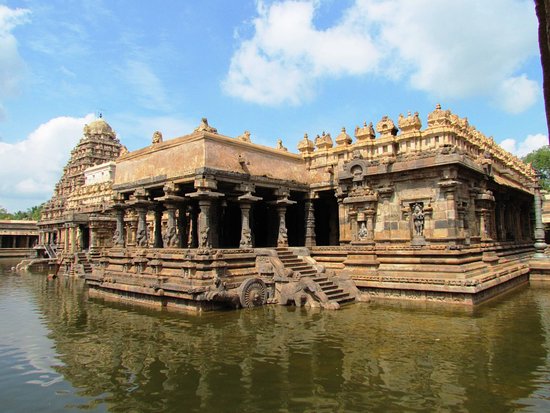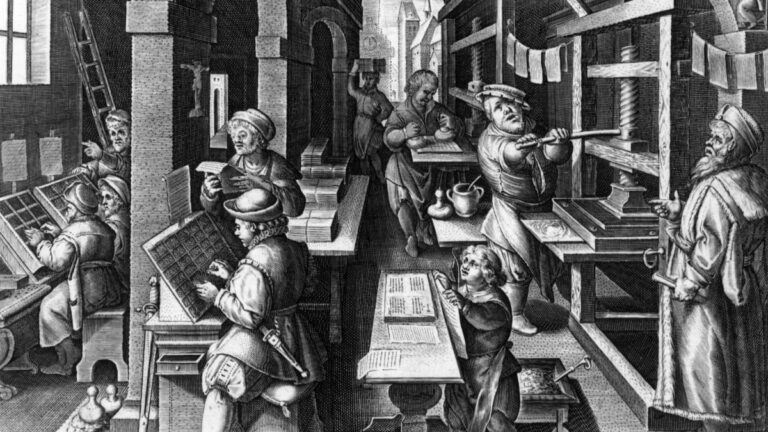
(Image: ©Tripadvisor)
Globe is full of Mysteries. Of it do you have overheard of the living chola’s temple architectonics or Mandir has dozens of subterranean clandestine passageways or Shrine’s tower that have no shades? Yeah these are some certain facts regarding “Brihadeeswara Temple” in India. It is a destination of mysteries & fascinating “India’s Architectural Style”.
Origin/ History:
Tanjore/ Tanjavur is a hotspot for south India’s “Temple’s Architecture”. It is often deemed as “Rice bowl of Tamil Nadu (Tanjavur)”. Vast majority of living chola shrines are present in & out in Tanjore. In this the predominant one is Brihadeeswara Temple/ Peruvudaiyar Kovil/ Periya Kovil/ Rajarajesvaram. The term “Brihadeeswar” means “Big Lord” in “Tamil Languge” It was the “Marathas” who gave the shrine its present day nomenclature/ name; & also called it as the “Great Eshwara Temple” by them. It is situated on the south banks of river “Kaveri” in Tamil Nadu (Indian State). Besides it’s come under “UNESCO World Heritage Site”. It was constructed in the year 1003 to 1010 AD by the Tamil Emperor named “Arulmozhivarman”. He is also eminently known as “Raja Raja Cholan I/ Sivapada Sundaran”. More or less he takes seven years to exhaustive the temple. At present time archaeologists & historians are baffled in what he could construct such a stupendous temple in a short space of duration. It is the tallest shrine of that century & first temple built with granite throughout the world. Also he had donated voluminous tracts of land to provide funding to safeguard the shrine. Moreover it is one of the massive, excellent brilliance & Splendor temples of “India’s Temple Architecture”. It’s devoted to “Lord Shiva” & the Presiding deity of the temple is Shiva in the form of Lingam is “8.7 m/ 29 feet” high, making it one of the colossal lingam in the globe. It amalgamates the Hindu Heritage of “Shaivism, Shaktism, & Vaishnavism”. The monarch “Raja Raja Cholan I” construct this mandir subsequent his visit to Sri Lanka (An Island), too he was inspired beyond witnessing the “Vedic Structures” framework by the “Indian Emperors”. Epigraphs/ Inscriptions in this shrine pinpoint towards “Kunjara Mallan Raja Raja Perunthachan”, who is the prime architect of this shrine. Up to now his offspring & adherents practice the art of Vastu Shastra/ Vastu. It is approximately 240m length &120m widespread. Not only that in this temple is built over 29 square bases & is besieged by trench on two halves and “Anaicut River” on the flip side. Its complex structure has five sectors. It covers Sacrarium’s Tower, Assembly Hall (Mukhamandapam), Gathering Hall (Mahamandapam), Pavilion (Prakara), & Nandi Hall (Sacred Bull). “Frescoes & Epigraphs” on the walls of “Big Temple” record the ups & downs of the city’s affluence. It was the center of utmost festivities celebrated in the Chola’s Kingship/ dynasty. Apart from that it is the masterpiece of tourist spot/ sightseeing areas in South India & also it is swarmed by tourists all the year round. As well as because of its architectonic this shrine is a mystery for the worldwide. A widely known architect “Ganapati” says that this shrine’s tower encompasses the same structure concepts utilized in the construction of fabulous pyramidal.
Mysteries
The temple’s gorgeous architecture will never goanna stop astonishing everyone visiting the shrine. World’s outset well known & only superficial “Lord Shiva Shrine” framework by interlocking stones however not by binding them is yet a superb mystery to the mankind of world level.
- Cap Stone
- No Shades/ Shadows
- Subterranean Clandestine Passageways
- Vimana
- Stairs on the top
- Granite Stones
- Cutting and carving of Granite stones
- Mysterious Nandi/ Scared Bull
- Musical Pillars
- Tanjore Paintings
Raja Gopuram/Cap Stone/Tower
The biggest mystery of all the other mystery in Big Tempe is the huge Cap stone. The upmost pieces of the Tower/ Cap Stone/ Raja gopuram of this shrine are single stone (Kumbam) which weighs 80 tons. Its framework is based on Puzzled Technique/Interlocked Method. Until now this knack/ technique, which was used by the Cholas, is mystery/ enigma which was unknown. In view of the fact that how they pull the colossal stone towards the pinnacle of the Tower/ Gopuram because of the shrine was construct when the equipments/ machines like cranes, escalators & rope cars did not exist. Nobody in this universe had ever placed such tremendous cap stone at the apex of the framed temple. “For what reason the acme of Tanjore shrine capped with vast stone? In what way the architects of Tanjore temple were effectually able to place the heavy cap stone at the top of the Tower (216 feet)?” Which are some FAQ (Frequently Asked Questions) about “Big Temple”?
Scientific Justifications:
- Tanjore shrine capped with vast stone:
“Lord Shiva Lingam” is placed at “Womb Chamber” (Garbhagriha) which “Electromagnetic Positive Energies” in enormous range. The Cap Stone of 80 tons was kept as a repulsive force in order to make the energy revolve here and there the shrine’s perimeter and run the place sacred & spiritually exquisite. This flow of energy gives Soothing, Calming & Comforting environs for pupil.
- Ways the constructors how placed the cap stone:
Scholars explain in what way they place the cap stone, first mode is “Manually” & another lane is “Vedic Mantra”.
- Manually:
Well known fact that there were no heavy machines, cranes or any high end equipments used to lift the stone up & place it at the peak of the shrine at that moment. As well as “Fleet of Elephant” was used is almost unfeasible. While a colossal triangular podium of half – pyramidal shaped structure was constructed that was erected adjacent yet to the opposite side of this prodigious mandir. Vedic architects conducted this mammoth’s task while performing “Yagna” under the guidance of Sages, Raja Raja Cholan I & Brahmans. They constructed the tremendous staircase of rollers on the base of to pull 80 tons stone by men & fleet of elephants.
- Vedic Mantra:
The Vedic Sound “OM” is the prime mover/ creator of everything in the galaxy & helps it in positioning itself properly in the solar system. Also “Vedic Sages” recited “Vedic Mantra” to place 80 tons of cap stone on the pinnacle of the Periya Kovil/ Brihadeeswarar Temple. Sages recited these mantras while to done the unimaginable task. Present instance is prodigy for each one of us.
No Shades/ Shadows
Another architectural marvel of the “Gopuram” is the shades of the tower do not plunge on the ground. It will just fall on itself. It was created thousands of years ago with quintessential “Equilibrium & Geometric Construction” which endure natural phenomenon. This is the only structure in the universe to have this weird facet. As per usual when the Sun is out the shade can be seen downfall on the land. Notwithstanding in this temple at midday the shadow of tower will not fall on the earth. The key reason is the basement of structure which is pretty big to absorb the shades of the Gopuram on its plinth/ base itself.
Subterranean Clandestine Passageways:
Big Temple/ Brihadeeswara Temple include in excess hundreds of clandestine passageways to numerous places like edifice, Divergent temples, & further locations in & out Tanjavur. These passageways are especially constructing for emperor, empress and Sages/ Savant whosoever can wander through miscellaneous shrine at time of auspicious days such as Makar Sankranti, Maha Shivratri, Deepawali, & variant devout festivities. In it handful passages were interrelated & to be utilized for free circulation of fresh air running through lush green flora filled with oxygen for fine breathing of the dwellers roving through the clandestine pathways of the “Tanjore Mandir”. At present majority of the underground passages were sealed/enclosed, consequently if the public pick the incorrect passageway means it may lead to the hazard.
Vimana (216 Feet)
The chief tower has a void shape and the stones are interlocked without any binding material, while they stand spiritedly in its weightiness. One more miracle is the 216 feet hollow tower, without any binding material, has an ideal equilibrium & balance despite all the natural disasters over thousand years of period. It is one of the tallest temple towers on the earth. Additionally entire “Vimana” is built using granite stones and the sculptures in them are covered by a thin layer of mortar inside to preserve the figurine. Factual data about the structure of vimana is still failed to provide evidence by any one, as per scholars it was rolled by more than 1000 elephants from the 50 km nearby with a sloppy construction is made to keep the vimana/ tower in the apex. Now we envision ourselves as technologically advanced, but even today no 200+ feet structure in this world is built without Cements or Binding materials.
Stairs on the top
Supplementarily, there exists a diminutive staircase beyond the primary deity that leads to the topmost part of the tower/ vimana. Inside the void portion, if mantra OM is recited, the divine vibration creates an imperishable expertise.
Granite Stones
One of the strongest stones in the world is “Granite”. However “Tanjore” is a fruitful red soil area, where there is no trace of granite stones, yet the temple had been completely built with the granite stones. The transportation used by the ancient Cholas is still unclear. Other than that the sculpture designs & holes on the stones are so intricate to create with Copper / Iron Chisels which were used at that time. Beyond it is ponderous stone so transportation of bountiful stones from one spot to another is tough. Roughly 1, 30,000 tons of granite stones were used to construct this temple. Such gigantic stones were buy out from the spot that was located 50 miles away from the mandir.
- Scientific Justifications – Emperors used “Elephants” to pulled Granite Stones. They had ample resource of animals for building shrine. Cholas has earmarked over 1000 elephants and over 5000 horses for the construction of buildings.
Cutting & Carving of Granite Stones
It’s too hard to cut & carve “Granite Stones” for construction. After viewing Granite block shrines the “British People” tried to cut & carve granite stones but they had not yet done so. Those who have Fondness, Devotedness & Forbearance towards mother land has been made possible to done only. “Dictator Cholan” keen desire on preserving nature & ever not impair to environs when they frame Mandir. At any time if the wide array of trees were cut from the forests for the construction of temples, an equal part or in certain instances twice as much of trees were planted in the afforest. As of today it is practically impossible to cut & carve intricate designs on the “Granite Stones”, as shown/ illustrated in the “Big temple”.
- Scientific Substantiation– At the outset line of perforations was created in the Granite block/ stone. In this the holes can be profound or superficial predicted on the requisite. Afterwards wooden sticks were filled in those holes; and water is poured on the holes of the “Granite Block”. Over a long period of time the rocks would shatter & in similar manner, customized Granite stones were slit. This is the finest way to cut Granite Blocks.
Mysteries Nandi/ Sacred Bull
The statue of Nandi at the entrance of the temple is carved out of a monolithic stone. This tough stone was mined from the “Gneissic Bed” in the Pachamalai region. It is figurine during Raja Raja Cholan’s period of time. Altogether Shiva’s mandir, it is a heritage to place the sacred bull in front of the main shrine, facing the presiding deity “God Shiva”. It is 19 ft long, 12 ft high, 8.5 ft wide with weighs 25 tons, made out of monolithic granite stone kept ever growing in scale. Perhaps it because of the peerless weather condition and to control its growth, it was kept aside & nailed to soil (Nandi’s Backside). After then the size had remained unchanged.
Musical pillars
At first “Lord Ganesha” idol is adored before praying other deities. At the inlet of sanctum, one can see the two idols of Lord Ganesha in the corridor. While taping the two, you will feel the sound traveling through stone in one idol and through metal on another. The prime hallway of the shrine is said to have been utilized by the dancers & musicians performing “God Service”. In this temple few musical pillars generating distinct sounds while tapping it. The whole Vedic structure was built with sounds, mantra & vibrations. This is magnificent amalgamation of Vedic elements aggregated into one immense construction. Ergo “Big Temple” reveres “Vedic Music”.
Tanjore Paintings
The Big Temple’s frescoes embellish the wall of the shrine and also these frescoes depict “God Shiva” in heterogeneous position & plenty of stuff about “Raja Raja Cholan I” (selfless devote towards “Lord Shiva”). In the year 1940 these frescoes was invented by “S. K. Govindasami (Annamalai University)”. In excess it has survived the ravages of countless monsoons, six recorded earthquakes & huge bonfire. Too it inhabits a peculiar place in the history of Indian frescoes. Artisan/ Painters all over the globe are thunderstruck & yet trying hard to figure out in what way even today these hundreds of years antique frescoes look pretty fresh. Perpetual gorgeous of this temple’s frescoes lies in the herbages. Sages/ Scholars utilized natural elements for designing “Vedic Symbols” which acted as entryways for dissemination of information. It includes Colorful Leaves, Flower Petals, Turmeric, Treated Mud, Pressed Herbs, Crushed Salts and Neem. Everlasting of such “Vedic Symbols” was assured using “Ayurvedic Medicine”. Besides Sages were ingenious & they knew how to establish divine connection with Gods by continuous recitement of “Mantras”, this same manner was used by painters to paint/ design eternal charming frescoes.
Temple’s Map
It encompass the following places Maratha Entrance, Keralantakan Tiruvasal, Rajarajan Tiruvasal, Nandi Mandapam, Varahi Shrine, South Cloister Mandapam, Brihadeeswarar Temple, Intepretation Centre, Ganesha Shrine, Karuvur Devar Shrine, Subrahmanya Shrine, Chandikesvar Shrine, North Cloister Mandapam, Amman Shrine, and Nataraja Mandapam in the temple.
Shrine’s Fame
The temple is the mind boggling creation of Chola’s kingship and it is visible from whatever side in Thanjavur/ Tanjore, perhaps the one & only temple with such a trait. Furthermore this shrine became eminent worldwide in September 2010 on its 1000th birthday. At that moment “India Post” was released “One Rupee Postage Stamp” featuring the 216 feet tall Raja Gopuram/ Vimana in its memorialization. Too Reserve Bank of India released a “Five Rupee Coin” with “Tanjavur Big Temple/ Periya Kovil”. As well as “Thousand Rupees coin” will be released soon with the same picture (Big Temple) & this is the first “Thousand Rupees Coin” released by Republic of India Coinage/ Republic India Coins but not for common circulation zone. In the year April 1954, the “Reserve Bank of India” had released a “Thousand Rupees Currency Note” with panoramic sight of the shrine.
Our India has the peculiar honor of being the first ruler to have built the world’s first temple (structure) entirely made of granite. None other ruler anywhere had done this great feat in the universe. Mandir’s structure is a virtuous instance of “Dravidian Architectural Style” & it delineates the ideology of “Chola’s imperium & Tamil Civilization”. This has been one of the few temples that have “Guardians of the Directions (Ashta – Dikpaalakas)”. Still further interestingly this mandir also has manifold of figurine & stone engravings depicting Buddha’s life. In addition “Vedic Building Technology”was used by Raja Raja Cholan I & Engineers to build this temple. Presently it is maintained by the “Archaeological Survey of India (Central Government)”.Too its superintendant archaeologist “Sathyabama” says “The temple is in superlative condition and has no structural issues. In addition to P.S. Sriraman an assistant superintendant archaeologist of the Archaeological Survey of India says, “Even if you analogize Big Temple with diverse temples, it is at leastwise 40 times bigger since that time. Ultimately we will take vow to preserve the monument for the welfare of Upcoming Generations/ Young Generations.
By J. Vaisali, Sivkasi


